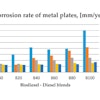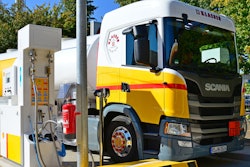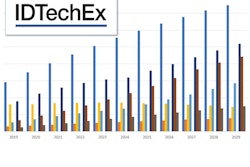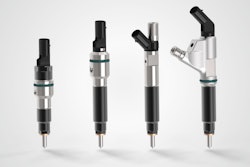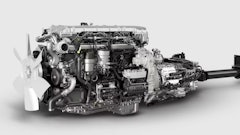NGVA Europe urges co-legislators of the European Parliament and Council to make appropriate inclusive decisions as they seek final agreement on the new regulation setting CO2 standards for heavy-duty vehicles. The European natural and bio gas vehicle association says it is fundamental that a mechanism for inclusion of renewable and synthetic fuels in the range of alternatives to reach the final CO2 reduction targets is developed.
In parallel to the measurement of tailpipe CO2 emissions, which are a necessary indicator of the vehicle efficiency and also to provide an indication of fuel consumption, emissions associated with fuel provision should be considered, looking to the much wider decarbonization target. This is a necessary signal to both vehicle manufacturers and biofuels producers to preserve the focus on investments.
NGVA Europe exhorts the co-legislators to include in the 2025 intermediate target a methodology to account for renewable gaseous fuel. The type of methodology is open and needs to be defined in order to be consistent with the rest of the EU legislation. What remains clear is that according to the multiple and varied missions the heavy-duty sector is called upon to fulfill, no one solution can fit. The mechanism must have capacity to assess the different technologies, both available today and under development.
The timeline is crucial for the sector and delaying the conception of the methodology would represent a missed opportunity. This is because a considerable amount of renewable gas is already available and compliant with the strictest sustainability criteria of the Renewable Energy Directive (RED). At the moment, the RED provides support for production but there is no mechanism to stimulate consumption and eventually releasing all sorts of biofuels from dependency on public support and creating a market-ruled product.
Therefore, accounting for the contribution of renewable gaseous fuel towards the intermediate target in 2025 is the most justifiable timeline, fully in line with the technology deployment of gas for freight mobility and renewables uptake.
Gas: Low fuel consumption, strong performance and low emissions
In parallel, it is also evident that the curbing of greenhouse gas emissions arises from a composition of efforts merging different contributions related to engine/vehicle technologies. Trucks running on gas are ranked among the lowest fuel consumption available on the market. By ensuring a strong performance in terms of fuel efficiency, in combination with extensive maintenance intervals, gas powered trucks guarantee overall strong climate performance.
Consumers benefit from existing distribution and refueling infrastructure
An adequate distribution and refueling network is already in place, while other fuel alternatives are not expected to scale up quickly. The development of a methodology will enhance the already existing infrastructure and possibility of low-carbon emissions mobility that natural and renewable gas offer. Furthermore, investments needed to develop the infrastructure are feasible and competitive when compared with other technologies and therefore would not result in increased costs for the end consumer, only benefits.
In this transitional period for the European transport and energy sectors towards zero- and low-emission driving, the push for CO2 savings shall look at all reasonable options without being unidirectional at any costs. Truck makers will have to be provided with complementary and viable solutions to reach the ambitious targets expected already in 2025. This will enable the sector to plan and invest accordingly.

